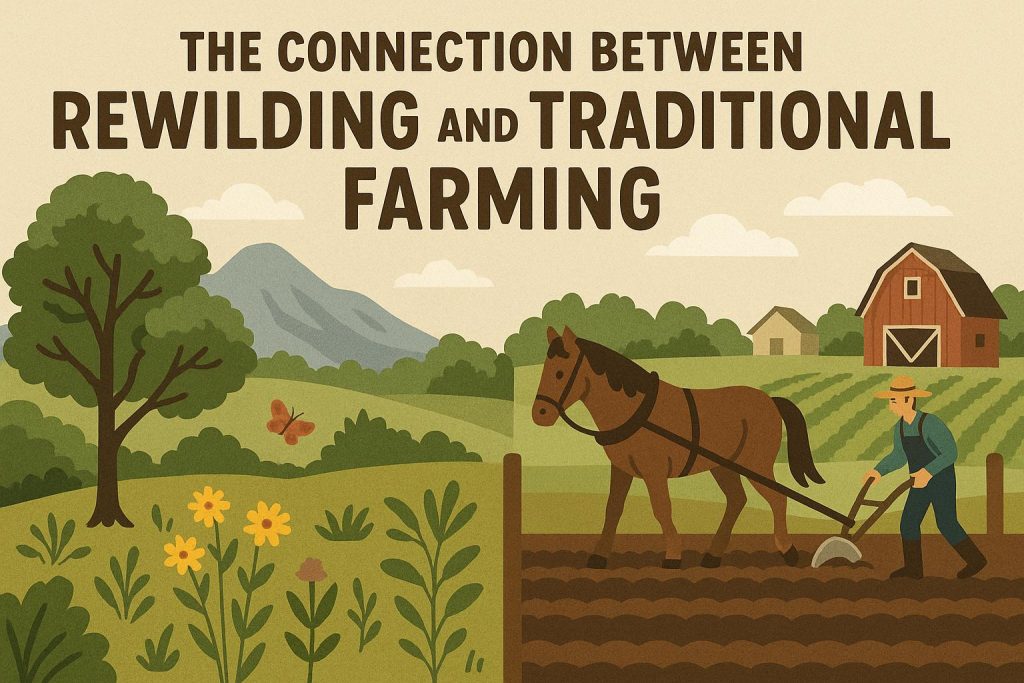
The Connection Between Rewildering and Traditional Farming
The Concept of Rewildering
Rewildering, sometimes referred to as rewilding, is an environmental conservation approach that endeavors to reestablish natural ecosystems, enabling them to flourish without continuous human manipulation. This concept centers around the idea of returning developed or altered lands back to their natural states. The process promotes the coexistence and evolution of native flora, fauna, and other organisms, creating ecosystems that operate as they have for millennia. By minimizing human interference, the overarching goals of rewildering are to boost biodiversity, enhance carbon sequestration capacities, and bolster the resilience of ecosystems in the face of climate change challenges.
Rewildering is underpinned by the principle that natural processes, when permitted to occur, can renew the vitality of landscapes. For instance, reintroducing apex predators to certain areas has demonstrated potential benefits, such as controlling herbivore populations and fostering diverse ecosystems. Therefore, rewildering prioritizes natural interactions and successional processes that shape habitats over time.
Moreover, this approach helps in establishing carbon sinks, essential for the mitigation of climate change. Forests, grasslands, and wetlands play pivotal roles in capturing carbon dioxide from the atmosphere. By restoring these ecosystems, rewildering enhances their capability to store carbon and stabilize global climate patterns. In addressing climate change, rewildering presents itself as a powerful tool for large-scale ecological restoration.
Traditional Farming Explained
Traditional farming encompasses a range of time-honored agricultural practices, refined and perfected over generations. This method is based on human-led endeavors in cultivating crops and raising livestock, often with a focus on optimizing yield and sustenance. One of the remarkable attributes of traditional farming is its adaptability; it manifests differently around the globe, shaped by local environmental conditions, cultural norms, and resource availability.
At its core, traditional farming involves cycles of planting, tending, and harvesting crops, while managing animals within agricultural systems. The practices vary, but many traditional farming methods uphold principles of sustainability, such as crop rotation, intercropping, and the use of organic materials to enrich soil fertility. These practices often emphasize balance with the natural world, echoing some objectives of rewildering.
Traditional farming not only represents a way of food production but also embodies cultural heritage and community identity. Techniques passed down through generations carry ecological wisdom rooted in intimate knowledge of the land. This deep connection fosters a sustainable relationship between humans and nature, which is indispensable for long-term food security.
The Intersection of Rewildering and Traditional Farming
Rewildering and traditional farming, while distinct in their methodologies and objectives, have the potential to find common ground. This intersection is largely found in their shared focus on sustainability. Many traditional farming techniques, particularly those which prioritize environmental health, can complement the goals of rewildering.
A prime example is *agroforestry*, a traditional agricultural practice that strategically integrates trees and shrubs into crop and livestock systems. This approach creates more complex ecosystems that support biodiversity, capture carbon, improve soil fertility, and enhance water management. The alignment with rewildering lies in its attention to natural diversity and ecosystem restoration, fostering resilient systems that support both agriculture and wild habitats.
Benefits of Integrating Rewildering and Traditional Farming
Embracing the integration of rewildering with traditional farming magnifies opportunities to design agricultural systems that fulfill human needs while safeguarding environmental health. Such integration fosters increased resilience against climate change impacts, supports rich biodiversity, and fortifies food security by establishing diverse ecological functions.
By blending principles of rewildering with traditional agricultural methods, negative environmental repercussions of industrial farming can be mitigated. Practices that enhance natural processes also restore soil vitality, conserve precious water resources, and reinvigorate ecosystems. The synthesis of these methods seeks to transform modern agricultural landscapes into models of sustainability and ethical stewardship.
Furthermore, the knowledge gained from traditional farming techniques can inform and enrich the rewildering process. Localized knowledge and cultural context can guide appropriate adaptation and implementation of sustainable practices that are more acceptable to communities with an agricultural heritage.
Challenges and Considerations
Despite the compelling advantages, interweaving rewildering with traditional farming does present challenges. One of the primary obstacles is the ecological suitability of some areas for complete implementation of rewildering practices without compromising agricultural output. Some regions may lack the necessary natural conditions or may require an extensive period of succession to achieve a balance between agricultural productivity and ecosystem functioning.
Adopting integrated systems necessitates altering existing farming practices, which could meet resistance from communities that have relied on conventional methods for generations. Transitioning to sustainable practices often requires substantial investment in education, training, and community engagement. There may also be financial implications associated with initial resource allocations and potential risks tied to changing yields or market dynamics.
Conclusion
In conclusion, the intersection of rewildering and traditional farming unveils promising avenues for the development of a sustainable agricultural landscape. By appreciating the strengths and limitations of each approach, stakeholders can chart pathways toward systems that honor natural processes while maintaining food security. This paradigm shift requires collaboration across disciplines, fostering a shared vision of ecological and agricultural interconnectedness. For those keen to delve deeper into this integration and explore various case studies, there are relevant resources that offer valuable insights and guidance.